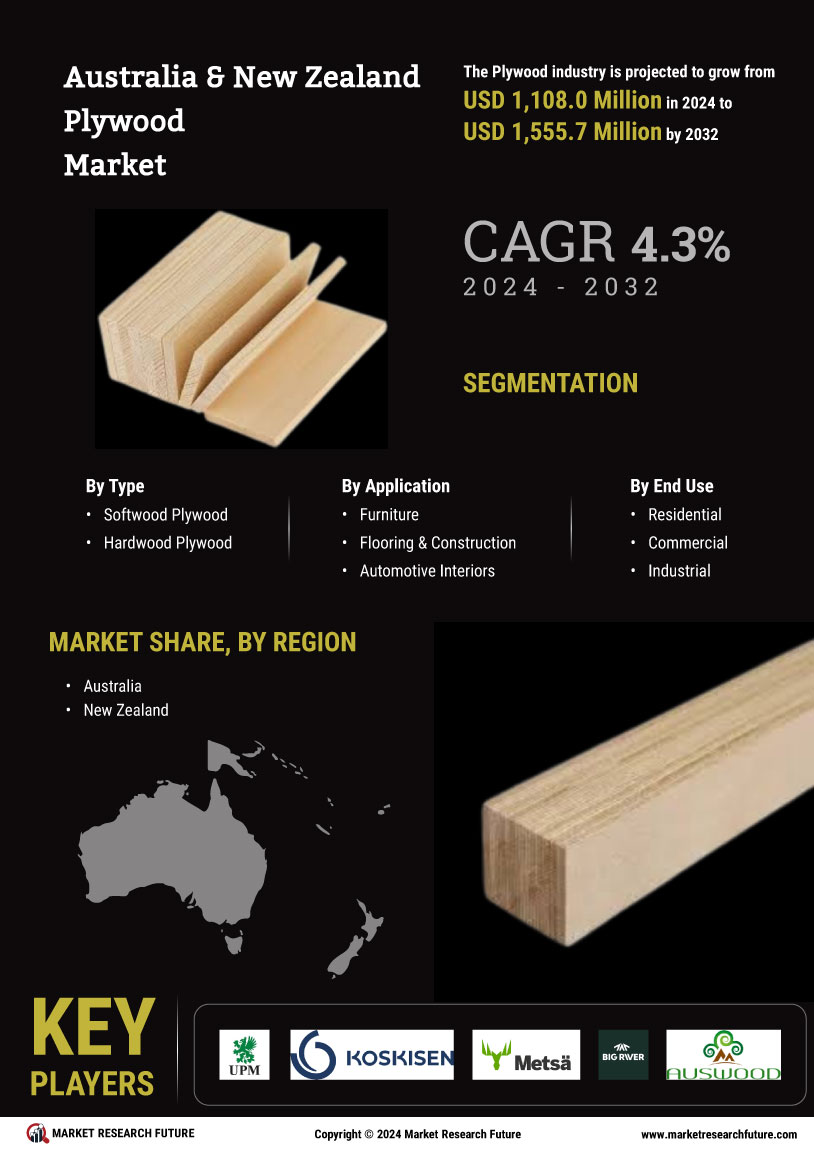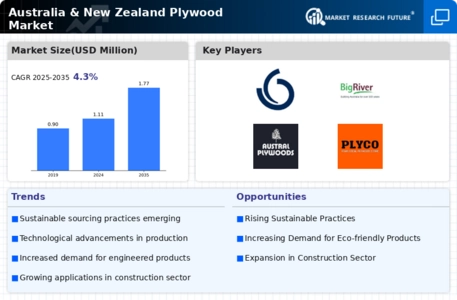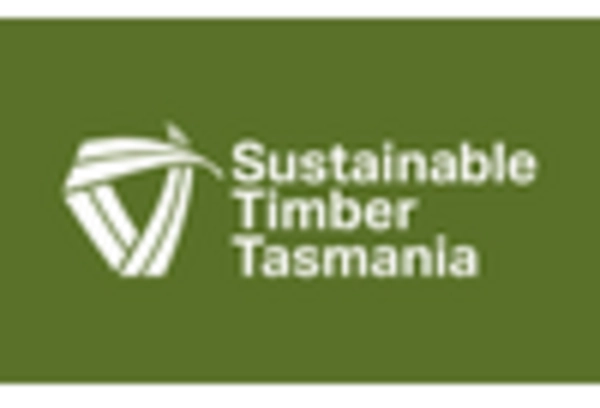Regulatory Support
Regulatory frameworks in Australia and New Zealand are increasingly supportive of the plywood industry, fostering growth and innovation. Government policies aimed at promoting sustainable forestry and responsible sourcing are encouraging manufacturers to adopt best practices. Additionally, initiatives to streamline building codes and standards are facilitating the use of plywood in construction projects. This regulatory support is likely to enhance the competitiveness of the Australia & New Zealand Plywood Market, as it aligns with global trends towards sustainability and quality assurance. As regulations evolve, they may create new opportunities for manufacturers to innovate and expand their product offerings.
Export Opportunities
The Australia & New Zealand Plywood Market is poised to benefit from expanding export opportunities. With increasing demand for plywood in Asia-Pacific regions, local manufacturers are exploring international markets to enhance their revenue streams. Recent trade data suggests that plywood exports from Australia and New Zealand have seen a steady increase, with a projected growth rate of 4% annually. This trend indicates a favorable environment for local producers to capitalize on the growing global demand for high-quality plywood. By focusing on export markets, manufacturers can diversify their customer base and mitigate risks associated with domestic market fluctuations.
Technological Innovations
Technological advancements are reshaping the Australia & New Zealand Plywood Market, enhancing production efficiency and product quality. Innovations in manufacturing processes, such as automated cutting and advanced adhesive technologies, are enabling producers to reduce waste and improve the durability of plywood products. Furthermore, the integration of digital tools for inventory management and supply chain optimization is streamlining operations. According to recent data, the adoption of these technologies could lead to a 15% increase in production efficiency over the next few years. This trend not only supports cost reduction but also meets the rising consumer expectations for high-quality plywood.
Construction Sector Growth
The robust growth of the construction sector in Australia and New Zealand is a primary driver for the plywood market. With ongoing infrastructure projects and a surge in residential construction, the demand for plywood is expected to rise significantly. Recent statistics indicate that the construction industry is projected to grow at a compound annual growth rate of 3.5% over the next five years. This growth is likely to be fueled by government investments in infrastructure and housing, which in turn will bolster the Australia & New Zealand Plywood Market. As builders seek reliable and versatile materials, plywood remains a preferred choice due to its strength and adaptability.
Sustainability Initiatives
The increasing emphasis on sustainability within the Australia & New Zealand Plywood Market is driving demand for eco-friendly products. Consumers and businesses alike are becoming more environmentally conscious, leading to a preference for plywood sourced from sustainably managed forests. This trend is reflected in the growing certifications for sustainable forestry practices, such as PEFC and FSC, which are gaining traction in the region. As a result, manufacturers are adapting their production processes to align with these sustainability goals, potentially enhancing their market competitiveness. The market for sustainable plywood is projected to grow, indicating a shift towards greener building materials in construction and furniture sectors.


















Leave a Comment